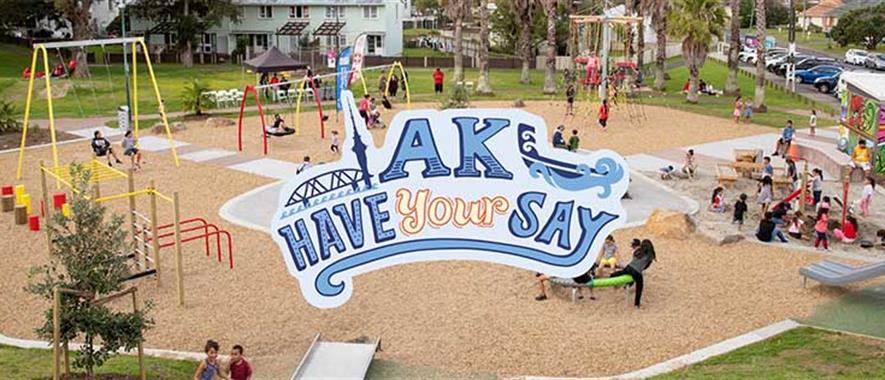‘Have Your Say’ and ‘consultation frenzy’
‘Consultation Frenzy’, my friend Luke Niue calls it. Over the past four weeks Auckland Council has been consulting on the 2018-2028 Long Term Plan – along with a stack of other plans. The Long Term Plan (LTP) is simply council’s budget projected out over ten years. It will cost a truly massive $65 billion, comprising $25b of capital and $40b of operational expenditure. Breaking it down to a yearly basis that’s $2.5b of capex and $4b of opex. It will be funded annually by $1.69b from rates; with the balance from borrowings, user charges, government subsidies eg for public transport; and dividends from Ports of Auckland and Auckland Airport. This year rates will increase on average by 2.5%. Of course depending on how individual property valuations have moved, many homeowners will be paying more, some will pay less.
But the Super City as we know is a hungry beast. Rates and all the other normal revenue sources will be insufficient to cover its spending. A large part of the problem is due to the cost of Auckland’s growth (which government and council policy actively encourages), including NZ’s extraordinarily high construction costs. Part of it frankly, is that Auckland Council simply spends too much on itself; and part of it is fiscally self-induced. The existing (2015-2025) Long Term Plan was budgeted on rates increases of 3.5% per year. However in 2016, Phil Goff while campaigning for the mayoralty promised to hold rates increases to 2.5%. In this new LTP rates increases will go back to 3.5% but in ‘Year 3’ – after the next local body elections. To cover the shortfall, last year the mayor pushed through a targeted rate on accommodation, the so-called ‘bed tax’. Unfortunately, as it turned out, for reasons never satisfactorily explained, while Auckland central and Waiheke accommodation providers have to pay the full rate, those in other parts of the region, eg Waitakere, Franklin and most of Rodney pay less or nothing at all. This means that the targeted rate only brought in about $13.5m, half that originally estimated. This year the council is proposing new, additional forms of revenue, most significantly a regional fuel tax of 11.5c per litre. This will go towards the proposed $12b, LTP transport spend. Exactly for what though, rather surprisingly, is still not clear. The mayor announced the setting up a ‘political advisory group’ of his close political colleagues to work out where the fuel tax will go. On top of that, additional targeted rates are being proposed to provide funding for stormwater to reduce the pollution of our harbour, beaches and streams ($66 per year), and for environmental initiatives $21 or $47 per year).
If you thought the LTP was challenging enough to respond to, there is also the raft of other documents the council is consulting on – notably a ‘refreshed’ Auckland Plan. Remember that? The Auckland Plan, legally the ‘Spatial Plan for Auckland’, was produced in 2012 under Mayor Len Brown and designed for 30 years. A great deal of funding and public input went into it and the document as it turned out was actually pretty good. However council officers argued that despite its time-frame, it’s already out of date and needing ‘refreshing’. This they have done by removing much of the content of the original.
Of real concern chapters dedicated to Auckland’s natural environment and built heritage have been removed and the words ‘built heritage’ totally expunged. This I believe is totally out of step with what most Aucklanders would want. The following ‘Direction’ I think, sums up the ‘refreshed’ Auckland Plan rather succinctly, ‘Use Auckland’s growth and development to protect and enhance our environment’. Oh really? So extreme is the council’s ‘refreshing’ (read gutting) the new Auckland Plan is no longer compliant with the requirements of the Local Government Act legislation.
Council is also consulting on a new Waste Management Plan with changes to services, including lucrative outsourced ‘pay-as-you-throw’ and highly centralised kerbside food waste collections. Finally there is the Regional Pest Management Plan, which deals with serious problems like kauri die-back and ecological pests but unfortunately also includes a silly proposal to microchip pet cats.
So how do Aucklanders respond to this ‘consultation frenzy’ in a meaningful way in such a short time frame? Unfortunately the traditional right of ordinary ratepayers to present submissions to the councillors was quietly dropped three or so years ago. Now only ‘key’ or ‘regional stakeholders’ retain this right. Regrettably attempts by some of us in the last two years to restore this right have been voted down. Interested citizens, not part of a recognised lobby group, are therefore encouraged to attend ‘Have Your Say’ meetings. The problem with these is that, despite their name, they tend to be dominated by council people having their say. Ratepayers are also encouraged to send their submissions to a website. My advice is to make sure you also email them to the mayor and to all the councillors. Good luck. This council’s track record for listening is not exactly encouraging. And remember while you may ‘have your say’ the council will almost certainly be having its way.
This article appeared in the April issue of Ponsonby News


